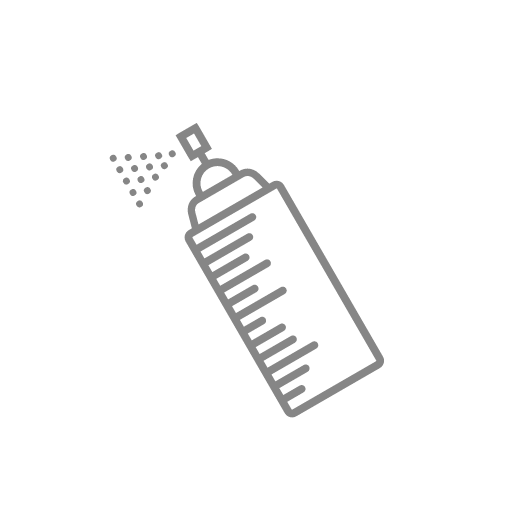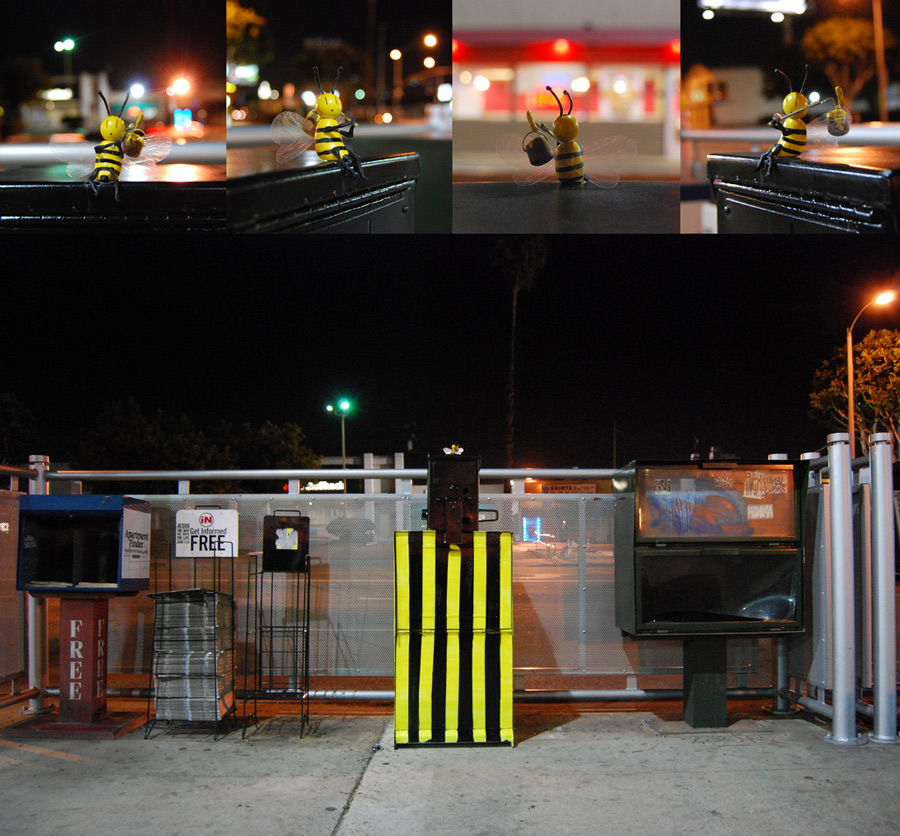
This is the latest 'page' in Bumblebee's ongoing story told through abandoned newsboxes in LA; see the notes that go with this page, and the rest of the pages here.
See more recent Bumblebee work, and read the interview I did with him.
artist: Bumblebee
location: Los Angeles
tweet this post / share on facebook
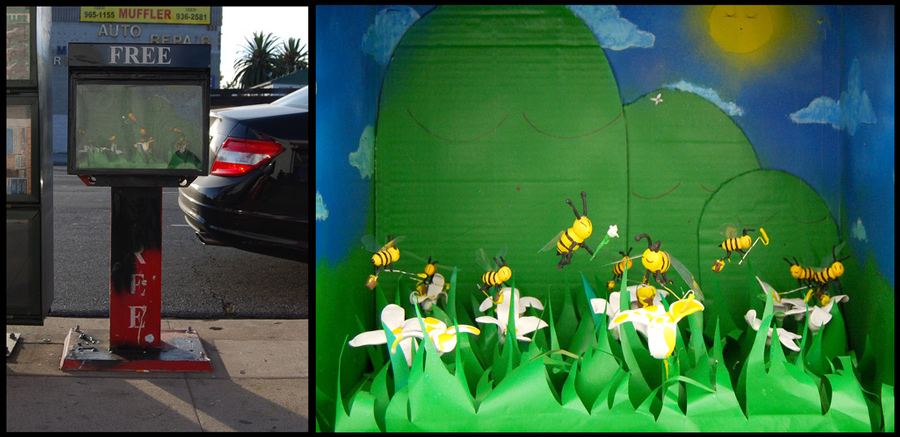
The Story of How Things Came To Bee - Page 4

The Story of How Things Came To Bee - Page 5
These are the latest installments in Bumblebee's story told through installations in abandoned newspaper boxes. There are notes that accompany each 'page' on Bumblebee's flickr page.
See more Bumblebee here, and the recent interview I did with him here.
artist: Bumblebee
location: Los Angeles
tweet this post / share on facebook / stumble

I first came across your work with the phone box hives project; how did that come about? How many hives did you put out, and are any of them still up?
Interacting and communicating with the public is what I aim to do with my work. After realizing that so many phone kiosks were beeing abandoned around the city, I realized a similar link between technology and nature which bee explained here:
“Telephone companies have been abandoning their public telephone booths by taking out the phones and leaving the structures beehind. (Probably due to the rise in cell phone users.) I want to reuse these structures as a way of communication with the public once more by replacing that empty space with paper-mache beehives. To me, this symbolizes the irony beehind the question, 'where have so many of the bees gone' and the theory that cell phone signals have been misguiding their normal patterns of migration.”
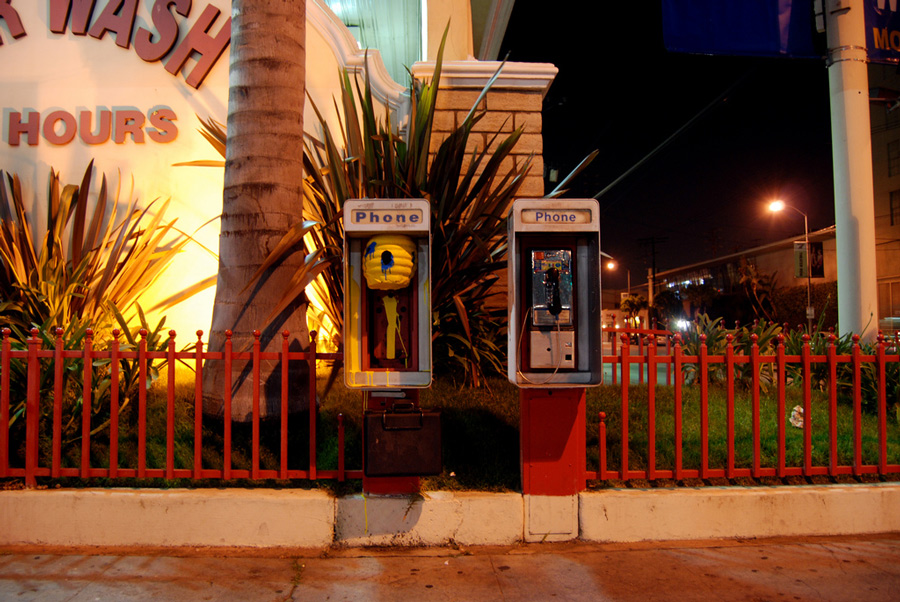
Hives have been put up in the Los Angeles, San Francisco, and Las Vegas area. Remnants from the paint and hives can still bee seen, but for the most part they are all lost. More are still being made.

Stencils featured prominently in your early work, but you've been focusing more on sculptures and installations recently; Why the change?
To bee an artist in these times we are in, it is important to bee different and have something to say. For me it was an evolution like most things that happen organically. Making sculptures allows for another dimension to express myself in. I felt it was something different that people in the community haven’t seen much and needed more of.
How did you come to focus on bees? What's the significance of them?
The bees represent a fear that the innocent often embrace. As a child you are sometimes told not to do things or play with things for the fear of what might happen as a result. To me that takes away the experience and freedom of trying new things for yourself. I felt that bees would bee a great representation of this even if their fear is as small as one. Street art is often feared and criticized as beeing vandalism and I believe that through my work I can convince people otherwise.
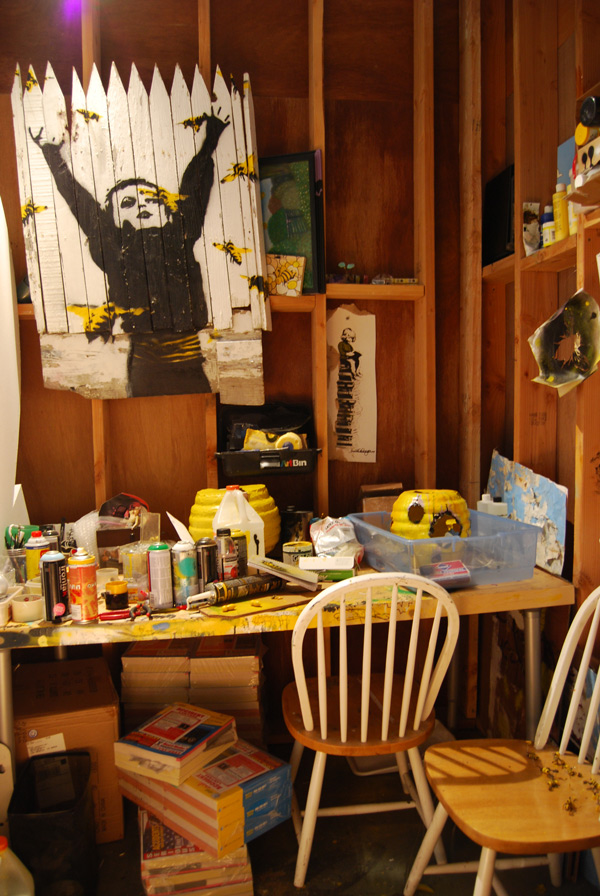
You manage to weave together a playful spirit of childhood with important issues like the collapse of bee colonies and the decline of newspapers; which comes first - the playfulness or the social commentary? Are you moving more in one direction?
Finding the perfect balance of both is what I try to do.

What are your main influences - art and otherwise?
I think one of my main influences in my art is going to work everyday. It’s a very colorful place.
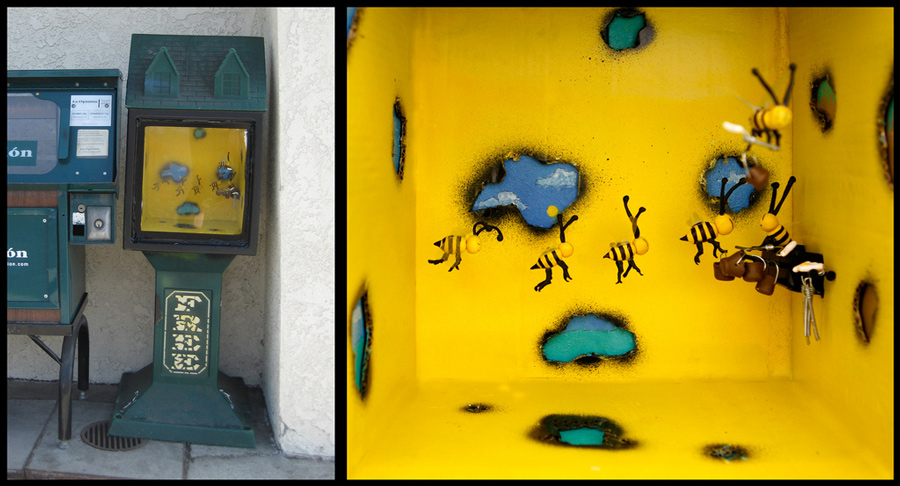
Tell me more about your new 'book' project. Will you actually create a book at the end of the project, or is it designed for the streets only?
Currently there is a book “The Story of How Things Came To Bee” beeing published on the street.
Here is a little more information:
“The ‘newspaper stand’ is soon becoming a forgotten way to communicate with the public. With more online news subscriptions being made, newspaper companies are leaving these structures abandoned. I want to use this endangered specie as a new way to communicate with the public once more. This is achieved using the concept of ‘site specific’ in the real world as well as the online world, and also by introducing a different concept of ‘time specific’. This technique helps to create a story on the street as well as the webpage in which the images are added to. Each newspaper stand represents a single page in the story “The Story of How Things Came to Bee”. Once the newspaper stand is placed back in the location from which it was originally borrowed from, a picture is taken at the exact time in which the story takes place. By adding the images to the webpage it allows for a narrative to bee created by using ‘notes’ (these are viewed by scrolling over the image) which can not bee seen on the street. Lastly, a map showing the locations of the newspaper stand is sited as well, allowing the online viewer to travel to each location and view these scenes in real life.”
Making the story into a book is definitely something I am interested in. Even if one child finds pleasure in reading it, it would all bee worth doing so. I would of course need to find a publisher.

Long term, are you more interested in street work or gallery work?
I am definitely interested in both. Both are extremely hard work and just as exciting to see after beeing put up. After having a successful show @ Carmichael Gallery I have realized that making work for the gallery is just as site specific as the street.

If you could buy any three pieces of art, what would they be?
Boxi’s ‘Embrace’, any Brad Downey sculpture, and one of Mark Jenkins’ tape babies.
The artist(s) that I'm really into right now is...
Interesni Kazki ( a duo from Ukraine; AEC & Waone)
What's next for you? What shows or projects do you have planed?
I will bee in a group show @ Thinkspace Gallery (LA). After the book project there are a couple of ideas that I would like to accomplish, one of which I can give you a hint.… ‘It’s a staple in every urban environment that has four wheels and is usually seen where it shouldn’t bee’.

What everyone should know is...
bumblebeelovesyou@yahoo.com
www.flickr.com/photos/theuglyyou
See more Bumblebee on unurth here, and check out his flickr page for more images, including the book project.
More unurth interviews here.
tweet this post / share on facebook / stumble

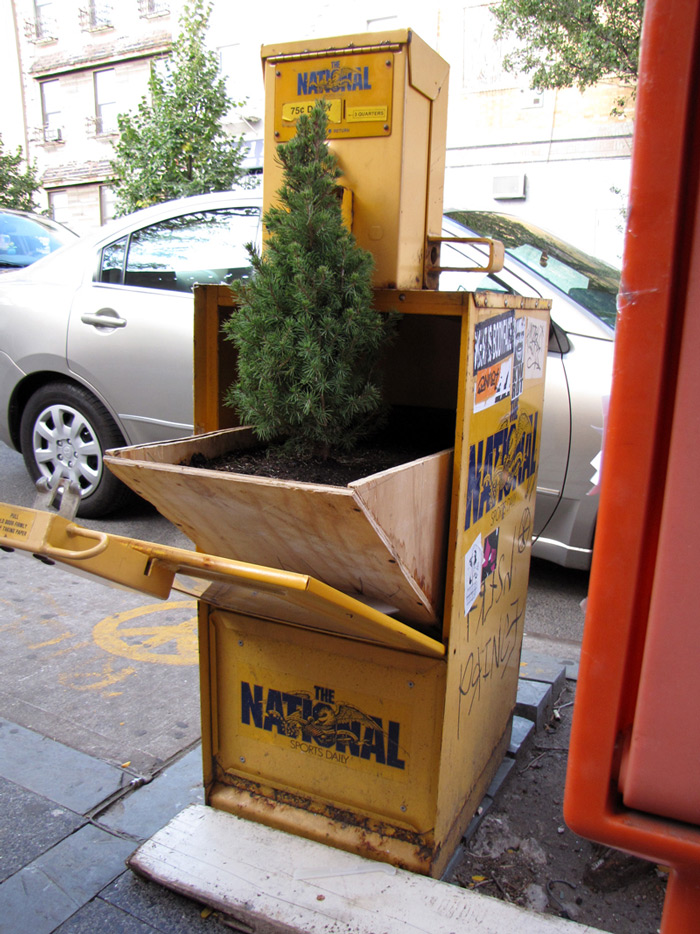
Posterchild:
"I've brought one of my Planterboxes to New York.
In it, I have planted an Alberta Dwarf Pine- Hopefully it will do well in the cold weather coming. I have named her “Alberta”, and I hope someone will decorate her if she makes it ’till Christmas!
If you are new to these Planterboxes the idea is to take the empty & disused newspaper and flyer boxes that litter our sidewalks and put them to a better use than say “Trashcan” or “Space-Filler”.
The National Sports Daily, or The National, was a sports newspaper in the United States which debuted January 31, 1990 and folded after 18 months ... the last time this box could have possibly seen papers was 1992.
So this empty, useless box has somehow managed to consume valuable sidewalk space in New York for 16 odd years.
The pine tree emerging from this dead, rusting shell of the print industry is very striking, since trees very much like this one were used to make the papers that this box once held. This box, more so than any of the others I’ve done, is a Phoenix."
artist: Posterchild (check out Posterchild's wonderful Blade Diary for daily street art)
location: NYC
tweet this post / share on facebook / stumble
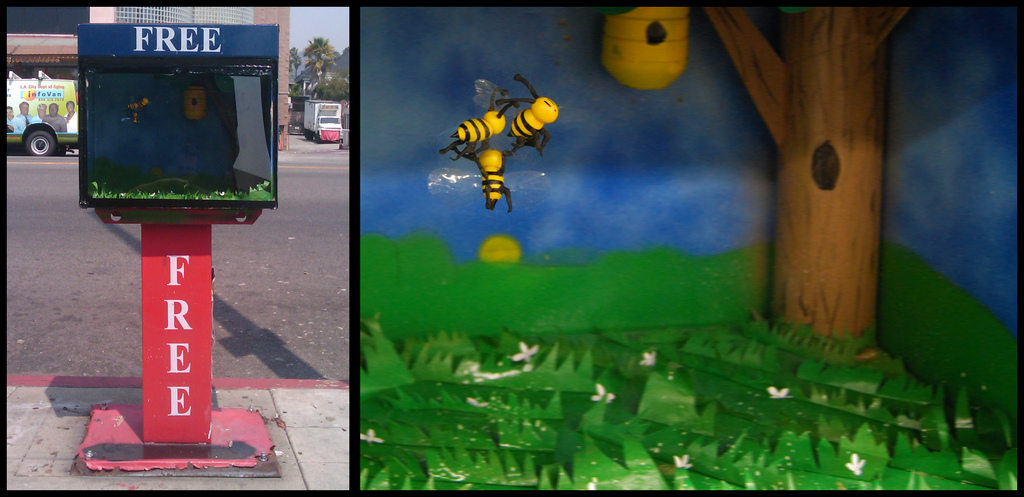
Bumblebee's 'The Story of How Things Came to Bee' continues to unfold in LA's abandoned newsboxes. Check Bumblebee's flickr to see the narrative of this page.
See page 1 here.
artist: Bumblebee
location: Los Angeles
tweet this post
share on facebook
